.
.
“Streamline Moderne,” by Amadea Tanner, was a finalist in the F. Scott Fitzgerald 2022 Short Story Contest, and was subsequently first published on the competition website. It is published here with the permission of Ms. Tanner.
.
.
___
.
.
photo via Appletreeauction.com
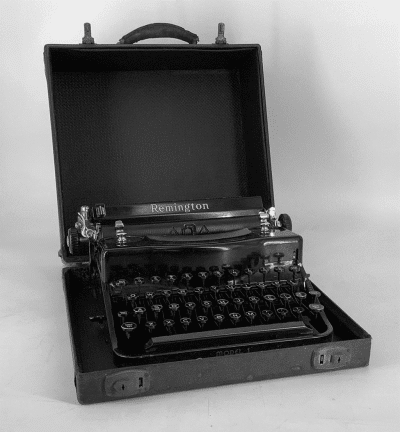
.
Streamline Moderne
By Amadea Tanner
.
…..“Machines like this are only worth the metal they’re made of,” the pawnbroker muttered, scanning the portable Remington skeptically. “Metal might actually be useful if we could melt this down to bullets.”
…..It was wartime, after all, and resources were scant. Gladys knew that even under normal circumstances her typewriter wasn’t worth much, but it was certainly worth more than nothing.
…..“I’m sure you’re hunting for advantage,” Gladys said, “but I could use some of that myself.”
…..Once upon a time someone would have been very pleased to possess a typewriter inscribed with her name on the square black case. Gladys Carmichael was a name everyone used to hear, but it had become as silent as the pictures she’d once written.
…..Gladys had been one of many women screenwriters in Hollywood during those early days, and no one had ever questioned their presence, just as they had never disputed the many women editors or camera operators. But even a pioneering form was forced to succumb to that curse of progress, which was a funny thing, considering on occasion it performed the inverse of its intentions.
…..While so many of these silent moving pictures began and ended in feminine hands, their time in Lotusland was no bask in eternity. After a decade of Gladys’s career dwindling to smaller and fewer screen credits, a studio fire among the archives destroyed many reels of her silent films just before she was let go. Celluloid was quite flammable, and besides, there was no longer a place for her in the talkie economy tarnishing the silver screen. The studio executives had made it clear women could only write, unfettered, for the pictures so long as they didn’t have a voice.
…..Pawning her typewriter might have been a symbolic gesture if Gladys hadn’t needed the cash. If her own name didn’t amount to much, there were all manner of notable people who’d touched her typewriter’s keys. A little desperate to strike a deal, she gave the broker names like Elizabeth Taylor, Fred Astaire, and F. Scott Fitzgerald.
…..“Who’s the last one?” the broker asked.
…..“Used to be a famous writer.” Gladys realized this description was just as accurate of herself. She clarified, “A novelist.”
…..The broker smirked. “Sentimental value would be better off in a museum. I’ve never heard of this Fitz.”
…..It was true that Fitzgerald, much like Gladys, was no longer such a household name. He’d had his day two decades prior, and had since faded to relative obscurity. She and Fitzgerald had risen to their highest heights around much the same time. The Jazz Age had been good to them in all its deco splendor.
…..“Wait a minute. Fitzgerald. I know that name,” the assistant polishing a row of watches spoke up, bringing Gladys back to the task at present. “Gatsby, right?”
…..“Yes,” Gladys smiled at him. Fitzgerald had regarded The Great Gatsby as his most promising work, or at least the one he’d hoped would carry him the furthest. While critics had admired the book, it hadn’t sold well. The latter still remained the measure of success.
…..“Murph’s a bookworm to the core,” the broker cut in. “I might expect him to know something like that, but the name doesn’t mean anything to me.”
…..“The Great Gatsby,” the assistant, Murph, repeated. “He talked a whole lot about repeating the past. That’s all he wanted to do. It was silly really.”
…..But Gladys didn’t see it so. Since becoming acquainted with Gatsby’s author, she had come to learn it was all too possible to repeat the past, though the great trick she now understood better than Fitzgerald was that it wasn’t the good times that could reprise their role. No matter how desperately one might wish to relive the good, it only ever seemed to be the bad that repeated itself. This was evident presently with great nations diving into the second great war of the century, a dark and stormy past pushing all of them forward with a vengeance, the whole world running on a loop like a reel of horror film in a projector.
…..Though she had seen him traipsing around the studio lots, Gladys had met Fitzgerald for the first time just over a year earlier in a Hollywood haunt around golden hour. Having found himself in a literary dry spell on the wrong end of a short-lived stint with fame, Fitzgerald had only recently begun writing for the studio. Pictures sold better than books, and he desperately needed to make a good living. This had turned writing, for him, into an additional kind of necessity from the mere compulsion that haunted all the rest stricken with the curse.
…..Gladys had approached him at the bar and introduced herself as a fellow screenwriter. He’d looked at her with something between pity and relief. “Sick of this sham too?”
…..“Spinning so many lies’ll lead us to word inflation.”
…..“Nobody’s using good words either,” he remarked. “What about ‘gorgeous?’ Nothing’s gorgeous anymore. It’s all just ‘neat’ or ‘pretty.’ Well I think that’s an awfully ugly turn of phrase.”
…..“It’s a shame,” Gladys agreed. “Now that pictures are talking, they’ve got remarkably little to say.”
…..Tipping his glass in her direction, Fitz invited her to take the seat next to him and ordered her the same elixir.
…..“I’m telling you, this place is purgatory,” he muttered. “Why would anyone ever want to see their life come to a standstill? At least, anywhere else, the weather gives you the illusion of progress.”
…..He had looked out the window towards the horizon as though it might prove him wrong. But there was only that same usual concrete oasis beneath the Hollywood Hills. He sighed, “Isn’t it tragic that eternal sunshine is so depressing?”
…..Gladys agreed. “It’s a strange reality to be sure.”
…..“The land of dreams,” he took a swig. “But they can only call it that because here they suck the dreams right out of you and turn them into cheap sensation. What I wouldn’t give to truly feel something again. I’ve gone numb to the world.”
…..“Maybe that’s only the drink.”
…..“Is there a difference?” he laughed. “Sometimes it seems my whole world fits inside a bottle. It would shatter just as easily.”
…..Gladys had felt sorry for Fitzgerald, clinging to the gilded glory of a spectral past. Though perhaps with this pity Gladys was also feeling sorry for herself. She too had been living her life in retrospect, inhabiting the same reconstructed world that had been torn down and painted over. Obscurity was harmless if that was all you’d ever known. But to be known and forgotten brought one even while still living into the realm of ghosts, those shadows skirting the edge of the spotlight.
…..She and Fitz reminisced about their bygone days, memories too dear yet to have become history. They wondered if maybe it was only a matter of timing that made them unlucky. Maybe practicality was just a fad. The times were all of a sudden heralding clean lines and clean slates, streamlining the production of any and all things. Was it truly inevitable, this “modernity,” as everyone had been led to believe? Whatever happened to the spirals, the zigzags, the twists and turns? Looking out the murky window from their deco world of before, Gladys and Fitzgerald lamented that art, architecture, story plots, the future itself should ever unfold in a single straight line.
…..She and Fitzgerald had become friends of convenience, or perhaps necessity, after this initial barside exchange. But not for long. In December of that year, amidst the glimmering rays of eternal sunshine, Fitz was found dead, having succumbed to a heart attack. Certainly he hadn’t been well, but it seemed strangely just that he should prematurely leave the world that had incidentally retracted his place in it. A few weeks later came the studio fire, and then the termination of Gladys’s employment.
…..A year after Fitz’s death, the States entered into the war that had long been cresting the opposite coast, proving that even in the industrial surge forward, there was no way to escape history’s rolling current. It was all variations on the same theme, repeated in new and even the same ways. There were, after all, only so many plotlines to work with. In the simplest of terms, life could be comic or tragic.
…..Gladys had never imagined she would be reduced to pawning off her most cherished things. Though her despondence was no greater than that of any other sorry soul in such a time, it must have been fresh enough that the pawnbroker eventually took pity on Gladys and paid her a paltry sum for her typewriter.
…..This was the last of her prized possessions. First it had been the silver candlesticks, then her grandmother’s pearls, and her father’s watch. These had all been useless things she only kept for sentimental reasons anyway. But giving up the typewriter was different. She knew it was silly to feel anything for a machine, but it was part of her in the way its letters had faded into her fingertips. During many frantic, sleepless nights pressing towards production deadlines, the keys themselves had formed words when her own mind could bear no more. The thing itself was nothing special. She’d bought it used. But having come to rely on this typewriter, having taken it for granted, Gladys felt a wave of guilt when she handed it to the broker and watched the thing transform from an old friend into a begrudging stranger.
…..She reminded herself that she only had to subsist for a little while anyway. Caught in the current, she had been pushed towards the war effort gaining strength and conviction with every passing day. It was the answer to her reduced circumstances, a stable job and maybe even the promise of a little adventure. It was almost a relief to have no other options. Though she hated to admit it, her situation had brought her to see the appeal in the steadfastness of that same straight line she had formerly despised. Better to surge forward with the rest than get left behind. Whenever she spared a thought for Fitz, she wondered if holding fast may have ultimately been his undoing.
…..After a brief period of training, Gladys joined the Women’s Army Auxiliary Corps overseas and began work as a secretary. The irony was never lost on her when she was presented with a new typewriter to carry out her duties. But she performed them well, thrusting herself into the menial tasks of hardboiled bureaucracy, following orders as though they were laws ordained. It was an easy life not having to think for herself, and a comfortable sort of anonymity being no more singular than her uniform.
…..The casual usurpations had been a very trying game in Hollywood, where sometimes a single good idea could bring someone from the bottom to the very top. Overseas, though Gladys still reported to a superior, she found it strangely comforting to be helpless within the chain of command. As a secretary, she saw many soldiers pass her desk, but she remembered few in this sea of faces, though most notably one who’d had his nose buried in an Armed Services Edition paperback while he waited to speak with the captain.
…..The Council of Books in Wartime had distributed millions of these disposable volumes to GIs across the globe. Gladys had seen them handed around as necessary distractions from the doldrums of war’s waiting game, successfully reviving another pastime that had been flickering out of style. But in this great literary renaissance, she had never observed anyone absorb the faded print with such rapt attention. Gladys felt almost guilty for interrupting the soldier when she asked tentatively, “Whatcha reading?”
…..“Gatsby,” he replied, not quite perturbed by the disturbance. “By Fitzgerald. Do you know him?”
…..“Yes,” she said, stunned. She realized the soldier was only asking whether she had read the author in question.
…..The last she had heard of The Great Gatsby, the book was all but out of print, just barely preceding its author in a disappearance from public consciousness.
…..“I should have liked it to be something,” Fitzgerald had once lamented to Gladys. “But maybe this world isn’t willing to tear the patches off the bigger picture.”
…..“Maybe you can’t hope for something to be anything other than it is.” Gladys had remarked. “If it’s something, people need time to realize.”
…..It was heartening to see this story in the soldier’s hands, reprinted and revived. To think something could get another chance at life meant the blood and ink and tears may have been well spent after all. But it was, of course, your own breath and blood you gave up, bit by bit, to give life to any work. It meant you had to die in order to live on.
…..Gladys supposed she had died too, in her own way. She had only risen from the ashes into a new life because her legacy was what had burned away.
…..At least the studio fires preceding the end of her career in the industry had been accidental. Now was a time when words were saturated with greater meaning and power. That was why the enemy ignited books on pyres, and why censors controlled new words that sprung up even on the righteous side. Cinema too faced an ultimatum, treading a gossamer line between storytelling and propaganda.
…..Gladys watched the soldier, who’d gone back to his reading, and wished stories could go back to being just that. The best ones could say more without telling you what they meant. That had been the beauty of silent films too.
…..“Is it any good?” Gladys prodded the soldier, nodding to the tattered pages in his lap.
…..“I don’t know if it is or isn’t,” he reasoned, “but it’s nice to know my world isn’t the only one going up in smoke. This sure makes disaster sound pretty.”
…..The captain called the soldier in shortly thereafter, leaving Gladys to reflect that making disaster sound pretty was as much as anyone could do. Beauty was the poignant contrast of the good and the bad together. Otherwise, out of context, either one might be too much to bear.
…..That’s why Gladys was content to do as she was told, to work within the confines of the war machine by using a prescribed vocabulary. It was too big of a fight, trying to be heard. Much easier to sit quietly and find satisfaction within the necessary parameters. Gladys no longer wished upon the past, nor did she speculate on the future. It all got churned together into a different sort of requisite limbo.
…..But her outlook, defeatist as it was while recording the march towards greater victory, became somewhat altered one day when a woman approached Gladys’s desk, requesting an audience with the captain.
…..This woman wore a neatly starched uniform with an armband labelled ‘C’ for war correspondent. Gladys had heard they’d started inviting a handful of women to come and report on the war effort, but until seeing this bright-eyed blonde towing a worn typewriter case, Gladys hadn’t believed it was true. They were nowhere near the front, being far from the lines of fire in the logistical tangle of red tape. Nevertheless, this young woman was here standing proudly in a man’s world, much the same way Gladys had when she’d been a starry-eyed newcomer crossing the threshold into Lotusland.
…..“I’d like to have permission to get to the front,” the woman said, staring Gladys down with a steely gaze.
…..“It won’t be easy,” Gladys warned her. “They don’t like pushing boundaries.”
…..Much like what had happened in the pictures, there were a few caveats for inviting women behind the scenes of the armed forces. Female correspondents could cross as many oceans as they desired in order to report for their papers, but they were seldom allowed close enough to the action to give eye-witness accounts. There were rules against it not being safe, but those same excuses did little to help the boys plunging into harm’s way.
…..“Rules,” the woman smirked, “they’re all just made up anyway.”
…..“You ought to tell the captain so yourself,” Gladys said, deciding she liked this young woman very much. “You can go on in and see him.”
…..“Would it be alright if I left this here?” she gestured to the typewriter case.
…..Gladys agreed, “I’ll watch it.”
…..There was something familiar about this girl reporter. After the correspondent went in to see the captain, Gladys found her eyes wandering towards the typewriter case. The Remington she’d pawned off not so long ago had been in a case just like it, well-worn from being towed between her apartment and the studio lot. The case had gotten to be pretty battered during the process, nearly as battered as this one was. Gladys supposed defending her words in the development meetings of another life had each been individual battles comprising their own sort of war effort.
…..The longer she stared at the case, the more familiar its worn edges seemed. If she squinted, she thought she could see a name inscribed at the top of it. The longer she looked, it was all too easy to see that name as her own.
…..Or at least what was left of it. ‘Gladys’ was vaguely visible, but ‘Carmichael’ had faded to obscurity.
…..Gladys felt a chill seize her, the tendrils of serendipity that pulled her towards an understanding. It was as though she had seen her own life flash before her eyes—past, present, future, all at once and evermore.
…..She couldn’t help herself, she laughed. And once she started, she couldn’t stop. She sat there cackling at the tent flaps that opened to the world, mad with the recognition that she had finally escaped her purgatory.
…..Once upon a time, she’d been that steely-gazed girl with grand aspirations who had walked into a pawn shop and bought a used typewriter. And whether this girl would go on to achieve greatness or die trying, the cycle would continue. Yes, it was certainly possible to repeat the past. Perhaps even inevitable. This modern machine setting out on that steadfast straight line couldn’t fathom the endless loop of eternity.
.
.
___
.
.

Amadea Tanner is a writer whose love of swing dance and music has prompted her to craft many stories set against the backdrop of WWII. You can read her story “Armed Delilahs” by clicking here.
You can find Amadea in the ether @amadea_cadence.
.
___
.
.
Click here to read “Mr. P.C.,” Jacob Schrodt’s winning story in the 62nd Jerry Jazz Musician Short Fiction Contest
Click here for details about the upcoming 64th Jerry Jazz Musician Short Fiction Contest
Click here to subscribe to the Jerry Jazz Musician quarterly newsletter (it’s free)
Click here to help support the continuing publication of Jerry Jazz Musician, and to keep it commercial and ad-free (thank you!)
.
.
___
.
.
Jerry Jazz Musician…human produced (and AI-free) since 1999
.
.
.








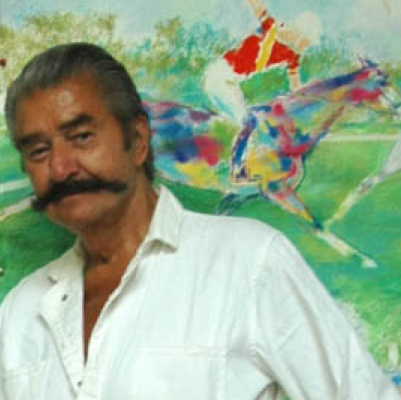

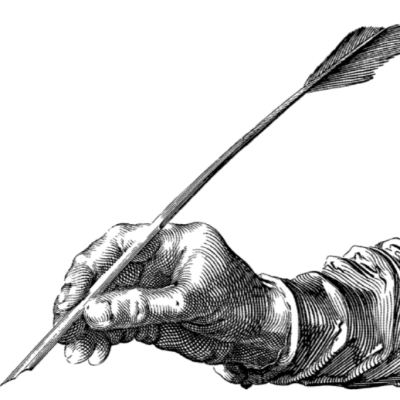
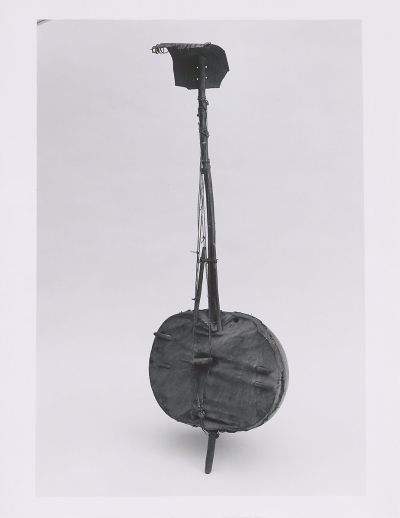

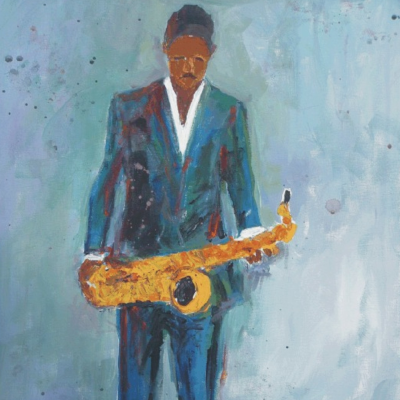



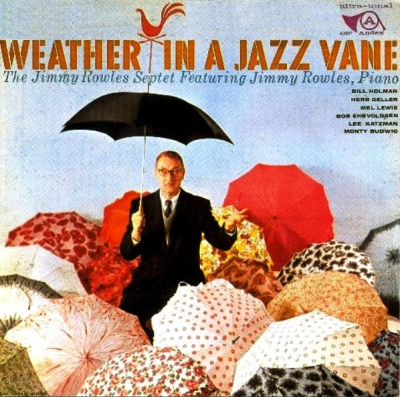


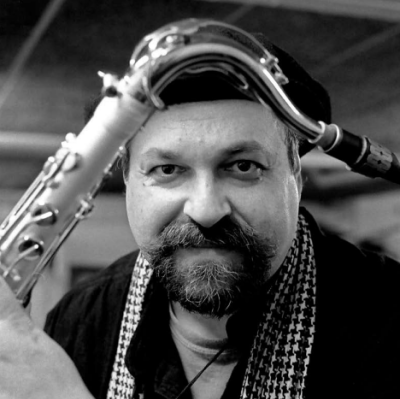


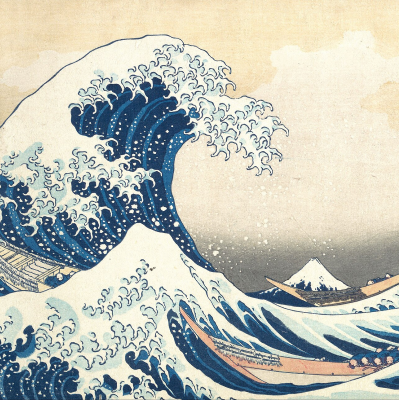

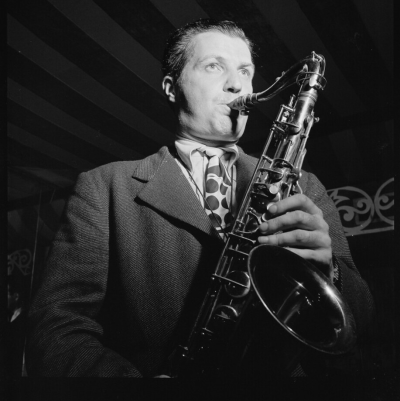

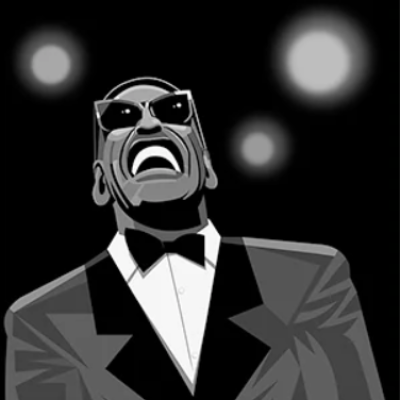






Another excellent read from this author. The characters, the vulnerability, the setting and historical context are all very enjoyable.